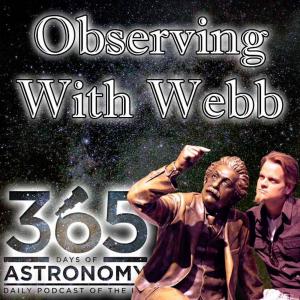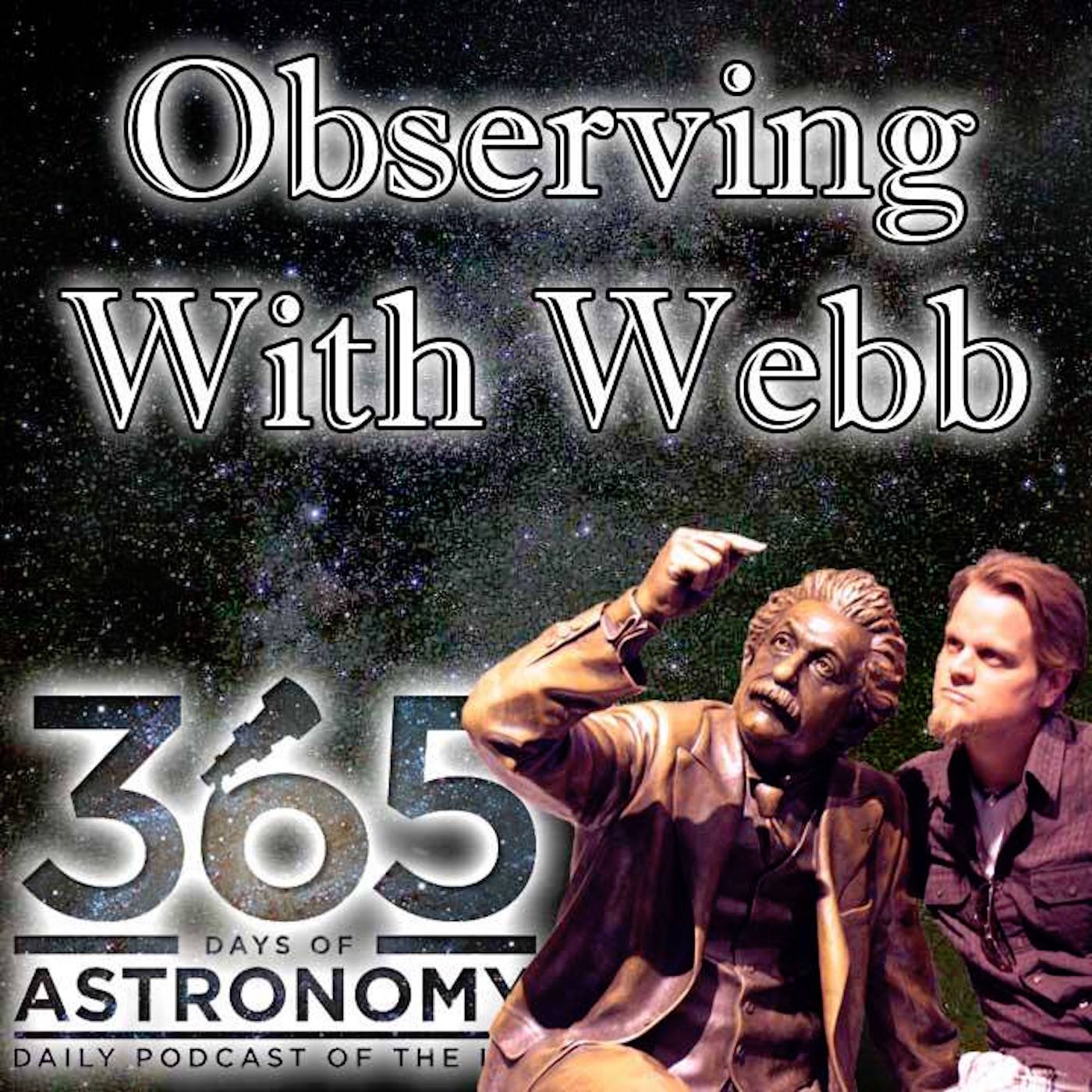Episodes

Tuesday Mar 31, 2009
Observing With Webb April 2009
Tuesday Mar 31, 2009
Tuesday Mar 31, 2009
This month we celebrate National Dark Sky Week, the Lyrid meteor shower, and Venus getting very bright once again… EVENTS... 2nd – 5th – 100 Hours of Astronomy – check out www.100hoursofastronomy.org for more details. Full Moon – 9th (Egg Moon) 20th-26th – National Dark Sky Week – Help reduce light pollution, darken the skies, and save energy this week by turning off all unnecessary outdoor lights. Go to www.ndsw.org for more details and ways you can help. 22nd – Lyrid Meteor Shower Peaks around 7am EST although it is active from the 15th to the 26th. 10 to 20 bright, fast meteors are expected at its peak. Some advice for watching – Find a dark location; lie down in a reclining chair or swimming pool floaty; Look toward Lyra (rising in the Northeast around sunset and setting in the northwest around sunrise) – that is where the meteors will appear to be coming from (the radiant); dress in multiple layers and bring hot chocolate; check the weather to see if the skies will be clear; if they are not, you should be able to see meteors a few nights preceding and following the shower; adapt your eyes to the dark by staying away from light sources or using a red light if you need to see. New Moon – 25th – (darkest skies) 29th – Venus is at its brightest for a while (see below). PLANETS... Mercury – Only visible very close to the sun after sunrise toward the end of April, when it is 20° (two fists at arm’s length) above the horizon/sun. VENUS – Actually visible during the daytime toward the end of the month if you know where to look and have binoculars or a telescope – you can actually see the crescent-ness of it better during the day. Before sunrise, look up and to the right of Sun (Look ESE and 15° above the horizon). Throughout the month Venus will get further and further from the sun until it pauses at a fairly steady distance away from June to July. The Sun rises between 6:00 and 7:00 am. It will appear as the brightest "star" in the sky until it is drowned out in the sun’s glare. Mars – Hanging out around Venus for the month. Is closest to Venus (4.1° apart) on the 24th. Jupiter – Only visible in the morning sky just before sunrise, between E and SE and about 10-20° above the horizon until the sun drowns it out. SATURN – Visible almost all night for the entire month. Look in the east after sunset, south and almost straight up at midnight, and in the west before dawn. Check out the rings with good binoculars or a telescope! CONSTELLATIONS... (see sky map link at the bottom for a Star Map for this month – or ask Mr. Webb) Look straight up and you'll see... Sunset (around 8pm) – Gemini, Lynx, Cancer 10:00 pm – Ursa Major, Leo, Leo Minor Midnight – Ursa Major’s Feet Early Morning – Lyra, Hercules, Cygnus – The Summer Triangle is just starting to rise now…summer is around the corner! Use a sky map from www.skymaps.com to help you out. Using Orion: Find Orion by looking for the three stars in a row that make up Orion’s belt (in the Southwest after sunset.) If you draw a line from the left star to the right star and keep going right about 20 degrees (about 2 fists at arm’s length) until you reach another very bright star, you will have reached the star Aldebaron in Taurus (the V). Follow that line a little more (about another fist) and you’ll find the Pleiades – if it’s not already below the horizon. Draw a line from the right star in Orion’s belt to the left star, and keep going left about 20 degrees (2 fists again), you’ll come to the brightest star in the sky – Sirius – part of Canis Major. Above these three constellations are Gemini and Auriga. The brightest stars in each of these constellations form a circle in the sky. Going clockwise - Aldebaron (Taurus) – Rigel (Orion – bottom right foot) – Sirius (Canis Major) – Procyon (Canis Minor) – Castor & Pollux (Gemini) – Capella (Auriga). It makes for great stargazing in the winter sky. A lot of credit for this information goes to: SkyMaps.com – Download the monthly sky map /www.skymaps.com/downloads.html" href="http://www.skymaps.com/downloads.html">here Sky & Telescope Magazine ...and various sky programs.


No comments yet. Be the first to say something!